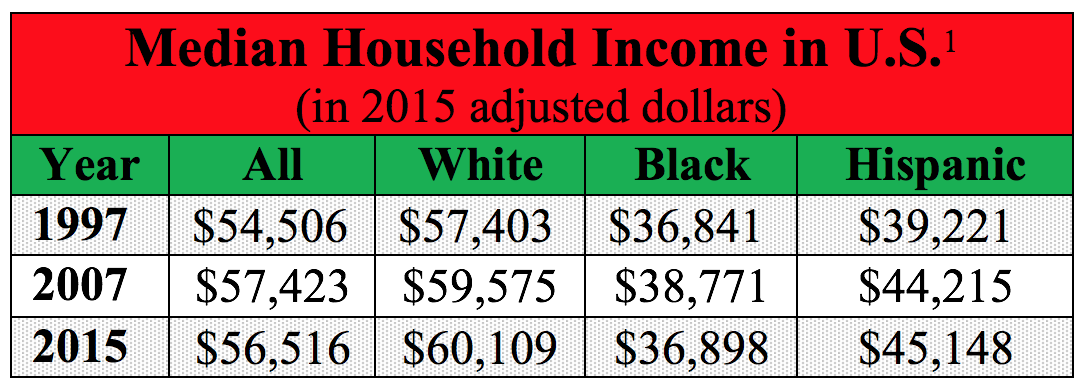
The U.S. Commission on Immigration Reform was mandated by the Immigration Act of 1990 in order to examine and evaluate U.S. immigration policy, and to provide recommendations for its improvement. The Commission’s initial recommendations were released in 1995, and were endorsed by President Clinton. The final report was presented to Congress in 1997.
President Clinton said the proposals “reflect a balanced immigration policy that makes the most of our diversity while protecting the American work force so that we can better compete in the emerging global economy.”
– “Clinton Embraces a Proposal to Cut Immigration by a Third,”
The New York Times, June 8, 1995
The Commission is now commonly referred to as the “Jordan Commission” after its most well-known chair, the esteemed Barbara Jordan. Click here to read more about Jordan’s life and her work on immigration reform.
“We are a nation of immigrants, dedicated to the rule of law. That is our history – and it is our challenge to ourselves.…It is literally a matter of who we are as a nation and who we become as a people. E Pluribus Unum. Out of many, one. One people. The American people.”- Barbara Jordan, August 1995
The Commission’s Guiding Principles
1) Clear goals and priorities must define U.S. immigration policy;
2) Effective policy means enforcement of immigration limits;
3) Regular review is needed to ensure flexibility to adjust to changing circumstances in the United States;
4) Immigration policy should be comprehensible and its implementation efficient;
5) Sponsors are responsible for ensuring that immigrants do not become burdens on the American taxpayer;
6) Immigration policy must protect U.S. workers against unfair competition from foreign workers, with an appropriately higher level of protection for the most vulnerable in our society;
7) Both temporary and permanent admissions categories must be seen as integral parts of a cohesive immigration policy;
8) A sound immigration policy supports Americanization, meaning that immigrants share with Americans such values as the belief in liberty, democracy, and equal opportunity;
9) Fundamental immigration reform requires a period of transition to get from the present system to the new one.
The Commission’s Recommendations
Following the above principles, the Commission recommended the creation of a “credible, coherent immigrant and immigration policy” and a “credible, efficient naturalization process” which included the following:
- A scale back of family chain-migration by implementing a prioritization of nuclear family relationships to determine who will be admitted through family-based immigration. Spouses and minor children of US citizens would continue to be admitted as first priority.
- Elimination of other family-based admission categories, including:
- Adult children of U.S. citizens;
- Adult children of legal permanent residents, and;
- Siblings of U.S. citizens.
- A focus on the admission of highly-skilled individuals whose skills would benefit our society. Recommended the elimination of the admission of unskilled workers and elimination of the diversity visa lottery.
- Immigration admissions level of 550,000 per year, to be divided as follows:
- Nuclear family immigration 400,000;
- Skill-based immigration 100,000;
- Refugee resettlement 50,000.
- Stressed that deportation is crucial. “Credibility in immigration policy can be summed up in one sentence: those who should get in, get in; those who should be kept out, are kept out; and those who should not be here will be required to leave.”
View the following reports:
- Jordan Commission's full report
- Jordan Commission's Executive Summary on Illegal Immigration
- Jordan Commission's Executive Summary on Legal Immigration
- Jordan Commission's Refugee Policy Report

*The U.S. Commission on Immigration Reform would have eliminated adult children of citizens and legal permanent residents as a family-based admission category (see “The Commission’s Recommendations” above). The Commission’s definition of Nuclear Family included: (1st Priority) Spouses and minor children of U.S. Citizens; (2nd Priority) Parents of U.S. Citizens; (3rd Priority) Spouses and minor children of legal immigrants.
1Department of Homeland Security, 2015 Yearbook of Immigration Statistics, Persons Obtaining Lawful Permanent Resident Status by Type and Major Class of Admission: Fiscal Years 2006 to 2015,” Table 6. These are the most recent figures available.

1U.S. Census Bureau, Current Population Reports, 1997: Population Profiles of the United States, pp. 2,4.
2 U.S. Bureau, U.S. and World Population Clock
3U.S. Census, American Fact Finder, 2015 estimate.
4 Steve Camarota, Center for Immigration Studies, U.S. Immigrant Pop. Hit Record 42.4 million in 2014.

1U.S. Census Bureau, Income and Poverty in the U.S.: 2015, “Households by Total Money Income, Race, and Hispanic Origin of Householder: 1967 to 2015,” Table A-1.

1U.S. Census Bureau, Income and Poverty in the U.S.: 2015, “Poverty Status of People by Family Relationship, Race, and Hispanic Origin: 1959 to 2015,” Table B-1.

*U-6 Unemployment Measure: includes those who are unemployed and have looked for work in the previous 12 months and those who are working part-time but want full-time employment.
1Bureau of Labor Statistics, “The Employment Situation: November 1997.” The commission’s final report was issued in September 1997.
2Bureau of Labor Statistics, “The Employment Situation: November 2007.”
3Bureau of Labor Statistics, “The Employment Situation: November 2016.”